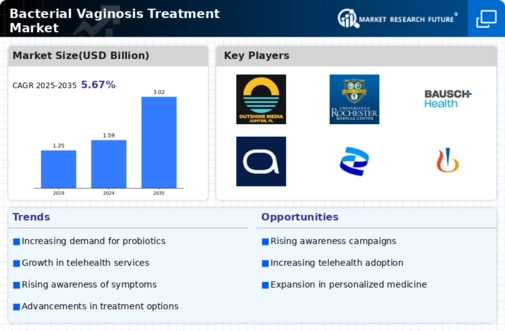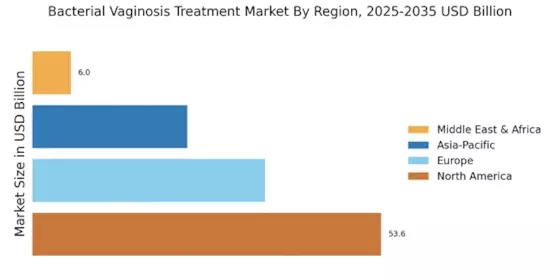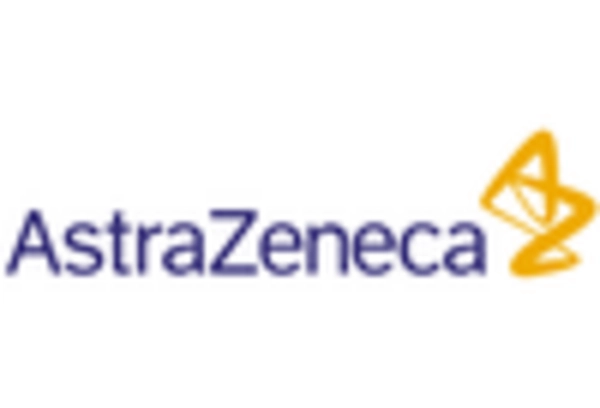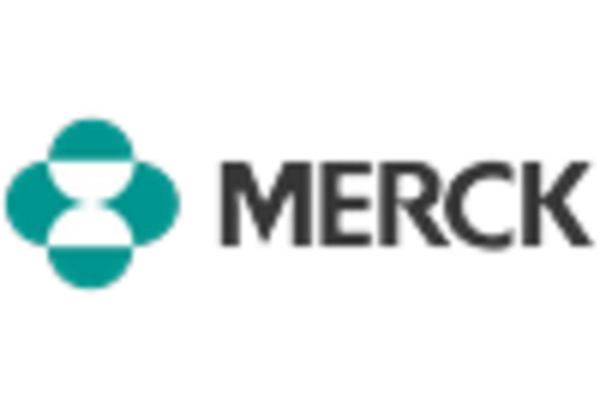Impact of Lifestyle Changes
Lifestyle changes, including diet, stress levels, and sexual health practices, appear to be influencing the prevalence of bacterial vaginosis, thereby impacting the Bacterial Vaginosis Treatment Market. As modern lifestyles evolve, factors such as increased stress and dietary habits may contribute to the incidence of BV. This correlation suggests that as more women experience BV due to lifestyle factors, there will be a corresponding increase in the demand for effective treatments. Additionally, the growing focus on women's health and wellness may lead to increased investment in research and development within the Bacterial Vaginosis Treatment Market, fostering innovation and expanding treatment options available to consumers.
Growing Awareness and Education
There is a notable increase in awareness and education surrounding bacterial vaginosis, which seems to be influencing the Bacterial Vaginosis Treatment Market positively. Campaigns aimed at educating women about the symptoms and risks associated with BV are becoming more prevalent. This heightened awareness encourages women to seek medical advice and treatment, thereby driving market growth. Furthermore, healthcare professionals are increasingly discussing BV with patients, which may lead to earlier diagnosis and treatment. As educational initiatives continue to expand, the Bacterial Vaginosis Treatment Market is likely to experience a surge in demand for effective therapies, as women become more informed about their health and available treatment options.
Advancements in Treatment Options
The Bacterial Vaginosis Treatment Market is witnessing significant advancements in treatment options, which could enhance patient outcomes and drive market growth. Recent developments in pharmaceuticals have led to the introduction of new antibiotics and alternative therapies that may offer improved efficacy and reduced side effects. For instance, the emergence of probiotics as a potential treatment for BV is gaining traction, suggesting a shift towards more holistic approaches. These innovations not only provide patients with more choices but also encourage healthcare providers to explore various treatment modalities. As the market evolves with these advancements, the Bacterial Vaginosis Treatment Market is likely to expand, catering to the diverse needs of women affected by BV.
Increasing Prevalence of Bacterial Vaginosis
The rising incidence of bacterial vaginosis (BV) among women appears to be a primary driver for the Bacterial Vaginosis Treatment Market. Studies indicate that BV affects approximately 21 million women in the United States alone, highlighting a substantial patient population in need of effective treatment options. This increasing prevalence is likely to stimulate demand for various therapeutic solutions, including antibiotics and alternative treatments. As awareness of BV grows, healthcare providers are more frequently diagnosing the condition, which may further contribute to market expansion. The Bacterial Vaginosis Treatment Market is thus positioned to benefit from this trend, as more women seek medical intervention for their symptoms, leading to a potential increase in product sales and treatment options.
Rising Demand for Over-the-Counter Treatments
The increasing demand for over-the-counter (OTC) treatments for bacterial vaginosis is emerging as a significant driver for the Bacterial Vaginosis Treatment Market. Many women prefer the convenience and privacy of OTC options, which may lead to a shift in purchasing behavior. This trend is particularly relevant as women seek to manage their health issues without the need for a prescription. The availability of OTC products, such as topical treatments and home remedies, is likely to attract a broader consumer base. Consequently, the Bacterial Vaginosis Treatment Market may experience growth as manufacturers respond to this demand by developing and marketing effective OTC solutions that cater to the preferences of women.


















Leave a Comment